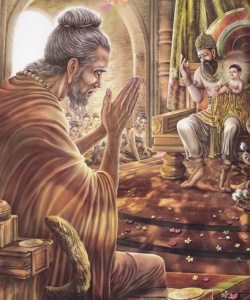Pudgalavada
The Pudgalavāda (Sanskrit; Chinese: 補特伽羅論者; pinyin: Bǔtèjiāluō Lùnzhě) or "Personalist" school of Buddhism broke off from the orthodox Sthaviravāda (elders) school around 280 BCE.
The Sthaviravādins interpreted the doctrine of anatta to mean that, since there is no true "self", all that we think of as a self (i.e., the subject of sentences, the being that transmigrates) is merely the aggregated skandhas.
The Pudgalavādins asserted that, while there is no ātman, there is a pudgala or "person", which is neither the same as nor different from the skandhas.
The "person" was their method of accounting for karma, rebirth, and nirvana. Other schools held that the "person" exists only as a label, a nominal reality.
Criticisms of the pudgala theory
The Pudgalavādins were strongly criticized by the Theravadins (a record of a Theravadin attack on the pudgala is found in the Kathavatthu), Sarvastivadins, and Madhyamakas.
Peter Harvey agrees with criticisms levelled against the Pudgalavadins by Moggaliputta-Tissa and Vasubandhu, and finds that there is no support in the Theravada nikayas for their "person"-concept.
Relationship to the Sammitiya
Among the most prominent of the Pudgalavādin schools were the Sammitiya.
The distinguished Buddhologist Etienne Lamotte, using the writings of the Chinese traveler Xuanzang, asserted that the Sammitiya were in all likelihood the most populous non-Mahayanist sect in India, comprising double the number of the next largest sect, although scholar L. S. Cousins revised his estimate down to a quarter of all non-Mahayana monks, still the largest overall.
They continued to be a presence in India until the end of Indian Buddhism, but, never having gained a foothold elsewhere, did not continue thereafter.
